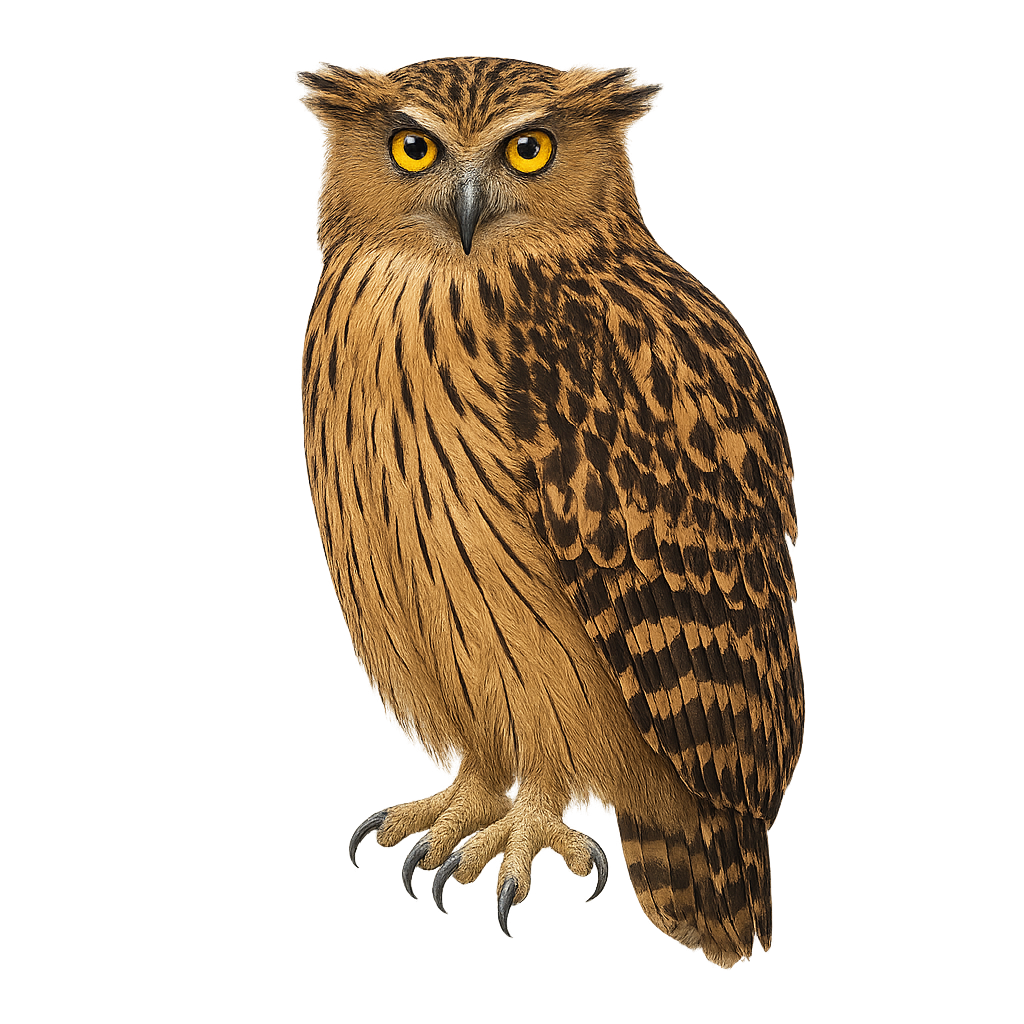Your wildlife photography guide.
Explore the tawny fish owl in detail, study its behavior, prepare your shots.
Where to observe and photograph the tawny fish owl in the wild
Learn where and when to spot the tawny fish owl in the wild, how to identify the species based on distinctive features, and what natural environments it inhabits. The WildlifePhotographer app offers tailored photography tips that reflect the tawny fish owl’s behavior, helping you capture better wildlife images. Explore the full species profile for key information including description, habitat, active periods, and approach techniques.
Tawny Fish Owl
Scientific name: Ketupa flavipes

IUCN Status: Least Concern
Family: STRIGIDAE
Group: Birds
Sensitivity to human approach: Suspicious
Minimum approach distance: 10 m
Courtship display: November to January
Incubation: 28-30 jours
Hatchings: December to February
Habitat:
dense forests, wetlands, rivers
Activity period :
Mainly active at night, generally discreet during the day.
Identification and description:
The Tawny Fish Owl, or Ketupa flavipes, is a medium-sized nocturnal raptor known for its piercing eyes and golden-brown plumage. It primarily inhabits dense forests and wetlands in Southeast Asia. This owl is a skilled hunter, feeding mainly on fish and small mammals. It uses its powerful talons to capture prey with precision. Although primarily nocturnal, it can sometimes be seen at dusk. Its population is stable, but it remains vulnerable to deforestation and water pollution. The Tawny Fish Owl is a symbol of wisdom and mystery in many Asian cultures.
Recommended lens:
400 mm – adjust based on distance, desired framing (portrait or habitat), and approach conditions.
Photography tips:
To photograph the Tawny Fish Owl, it's advisable to use a telephoto lens of at least 400mm to capture detailed images from a distance. Being a nocturnal bird, aim for late afternoon or early morning outings to take advantage of soft light. Use a tripod to stabilize your camera and avoid motion blur. Be patient and discreet to avoid scaring the bird. Silent mode photography can also be useful to minimize disturbances.
The WildlifePhotographer App is coming soon!
Be the first to explore the best nature spots, track rutting seasons, log your observations, and observe more wildlife.
Already 1 431 wildlife lovers subscribed worldwide

